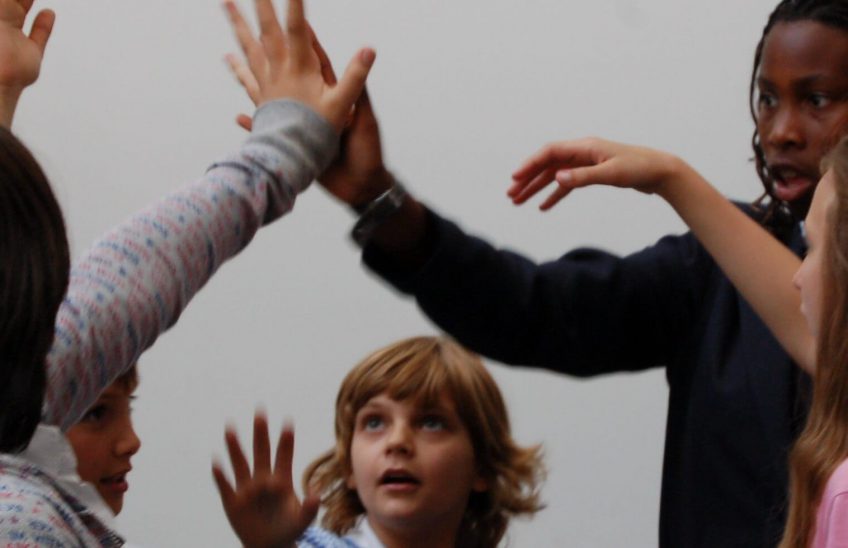In the best schools, human beings and relationships are at the heart of the culture. The academic progress and attainment will then tend to follow. The best school communities put people development first, knowing that behaviour, motivation and progress will all follow naturally.
Through my role at humanutopia for the past fifteen years, I have had the privilege and pleasure of having visited almost a thousand schools across the UK and worldwide, and I think I now have a decent idea of what an effective school community looks and, more importantly, feels like. As a result of my travels to schools near and far, I often get asked questions like ‘What is the best school you have ever been to?’ or ‘What makes a great school?’ My responses, often fairly intuitive and subjective, are along the lines of ‘You can just feel it when you walk in,’ ‘The students and staff all seem happy together,’ ‘There is a real sense of community.’
Of course, School Leaders past and present may read this with a cynical sneer, asking me ‘have I ever run a school or built a school community?’ I would have to reply negatively, but that doesn’t preclude me from having an opinion based on real and tangible experiences. I have visited schools in London where students have run amok at break and lunchtime; I have had apples thrown at me in a Bristol school; sweets thrown at me in a Nottingham school; cakes thrown at me from a balcony in a school in the North East, and all manner of other bizarre and hilarious situations.
It is important to state that I have never – and would never – visit a school as part of an Ofsted inspection; I have either been an interested visitor or there to run a programme or motivational workshop. So, the students and staff have never had cause to ‘put a show on’ for me, and luckily I get to see the school as it really is. It is important to remember that every school is a community and is part of a wider community, so it is probably more defining to talk about successfully building an effective school community.
Ofsted inspection teams do of course have stringent, objective and focused criteria to look for and measure schools by, but the best schools I have ever visited are where the school leaders have focused their attention two key aspects: the ‘people’ and the ‘culture.’ My intuitive gut feelings are based on observations of four areas of school life. These four areas tell me so much about what’s really going on within that community and just how effective that community is. Looking for and asking simple questions about these key areas is wonderfully enlightening and can prove to be very accurate in summing up a school in a relatively short space of time.
-
How Staff treat the Students
How staff – all staff – treat the students is the first and most obvious place to start when assessing the efficacy of a school community. When all is said and done, we are the adults and we should be modelling the behaviour we, and society, expect of our young protégés. So, on my visits, I look at how the site staff, the kitchen staff, the admin staff as well as the teaching and support staff go about talking to the students.
How do adults treat the students? Are they kind, friendly & respectful to the children? Do they know their names and laugh with them? Do they go the extra mile to support and nurture them? Do they push them hard and expect more of the students, refusing to accept mediocre effort and results? Do they talk fondly and lovingly about the students because it is obvious that they genuinely care about them?
-
How Students perceive Staff
Another key area of focus, observation and question is how the students perceive the staff. Again, I mean all the staff. When asked, how do students reply to questions like ‘How are the staff here?’ ‘How are relationships with the adults in school?’ How do you feel students are treated by adults here?’ The answers young people give to these open-ended questions reveal a lot about the underlying respect they have for adults, and they ultimately dictate the pulse of how young people choose to behave around school.
Do students respect staff enough to behave out of admiration rather than fear? Do they cooperate rather than comply? Do they engage and participate enthusiastically? Do the staff do enough to create emotional and psychological safety? Do students trust the staff? Are these relationships genuine? Are relationships based on equality and parity, or age and seniority? To improve motivation in education, the best school communities are where young people truly trust and admire most of the staff.
-
How Students treat Each Other
How the young people treat each other is key when considering effective school communities. I have been to schools where an ‘elite’ group of trendy, popular and what young people refer to as ‘relevant’ students create and dictate the culture of the entire school. They are the metronome, the heartbeat of that school and both staff and students respond accordingly to the whims and fancies of this powerful group of young people. How these students treat other students becomes the matrix of everyday school community culture.
The best schools I have seen are where the older students are given roles and responsibilities to ‘mentor’ or teach younger students; where they empower older students to run class time or assemblies to pass on their wisdom and advice. I see schools where older students eat with younger students and hang out with them in order to help them feel safe and part of the community. The best schools are the ones where the younger students look up to the older ones for all the right reasons.
-
How Staff interact with other Staff
Much can be learned about the culture of a school community behind closed doors in staffrooms and department/faculty offices. How do staff treat each other? How do they speak to/about each other? Are there obvious and visible hierarchies based on authority and seniority? Are the school leaders treated in the same way as the site or kitchen staff or do the teachers think that their professional qualifications make them more important than the support staff? These are all tell-tale signs and clues indicating how effective that school community really is.
In the best school communities that I am privileged to visit, I see very little differences between these four areas because all the human beings are treated equally and with respect. In these schools, the leaders do not rely on their authority; they give and get respect.















